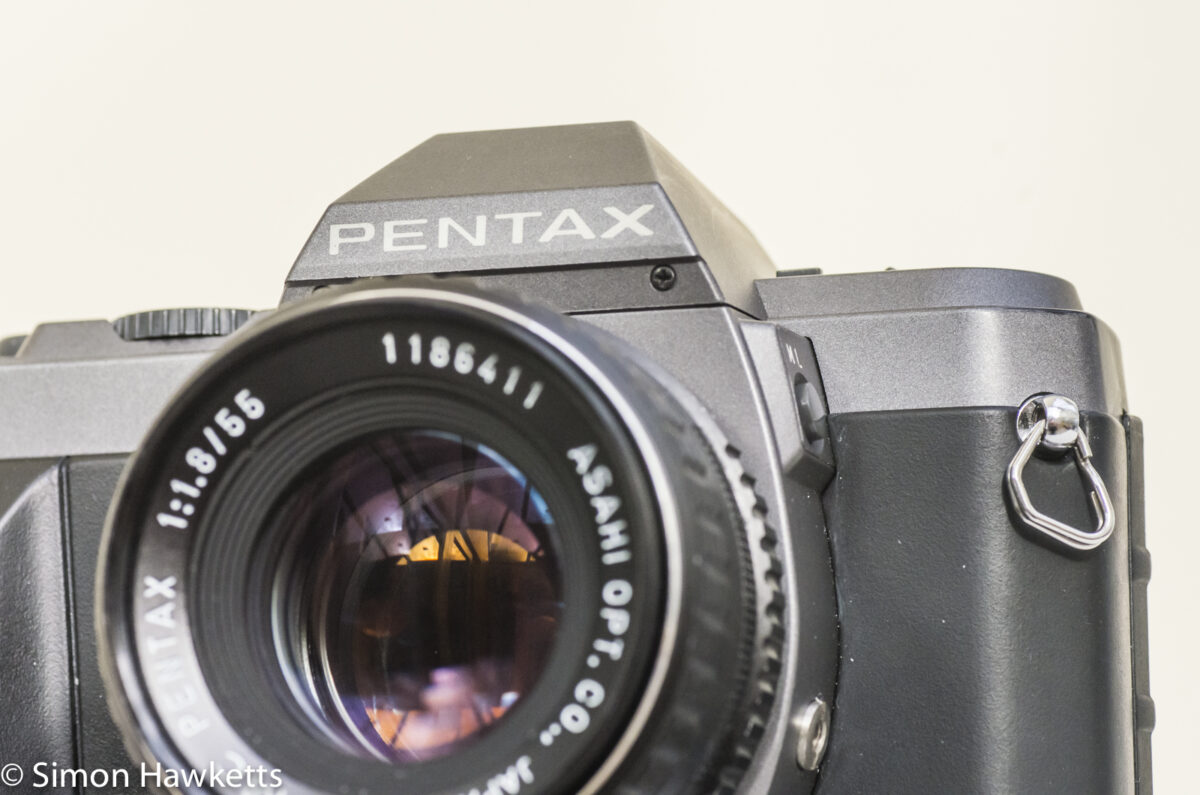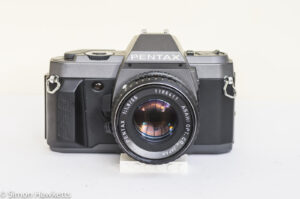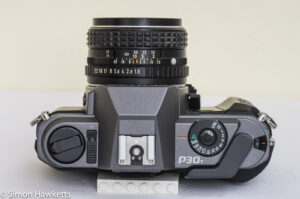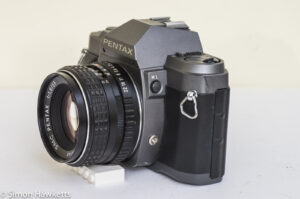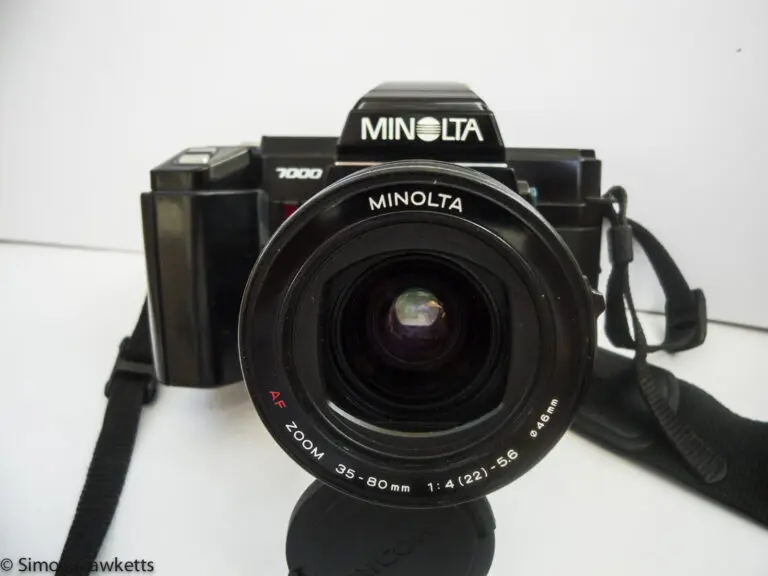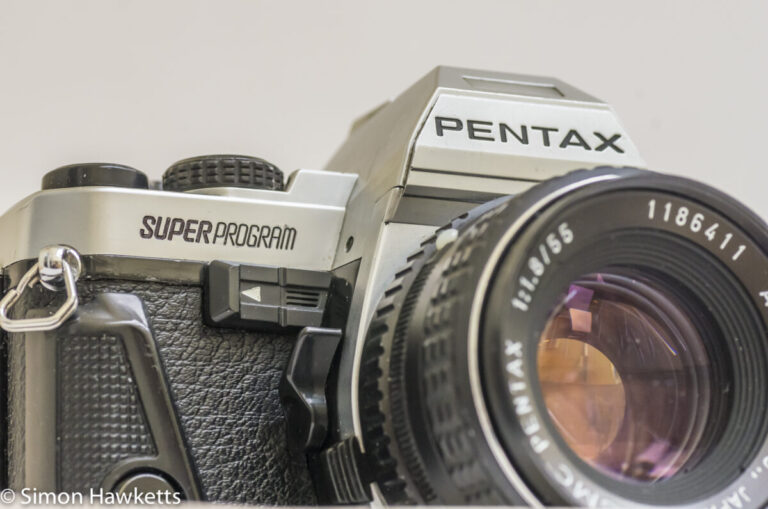Pentax P30T 35 mm SLR camera review
This is a review of the last and, in my opinion, the best model in the P30 series that Pentax made – the Pentax P30T.
Pentax P30T Images
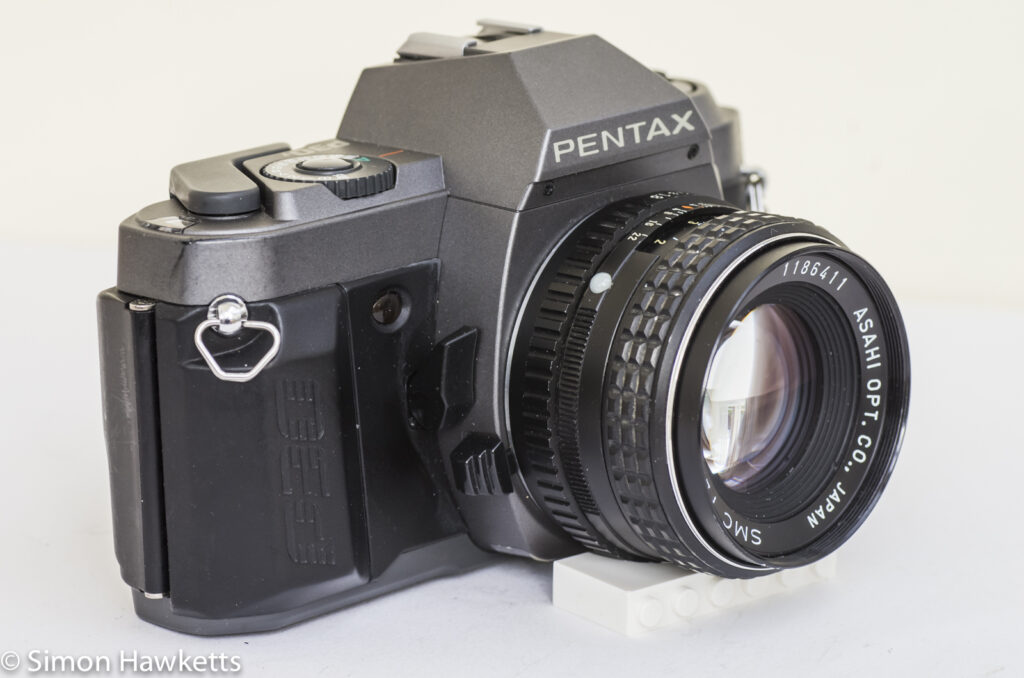
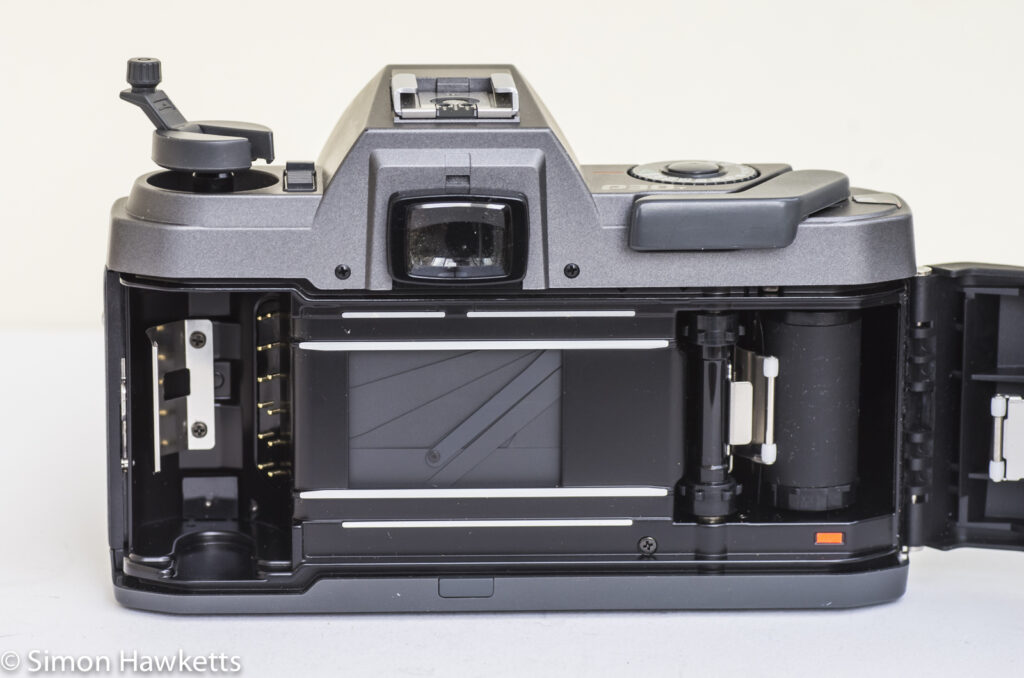
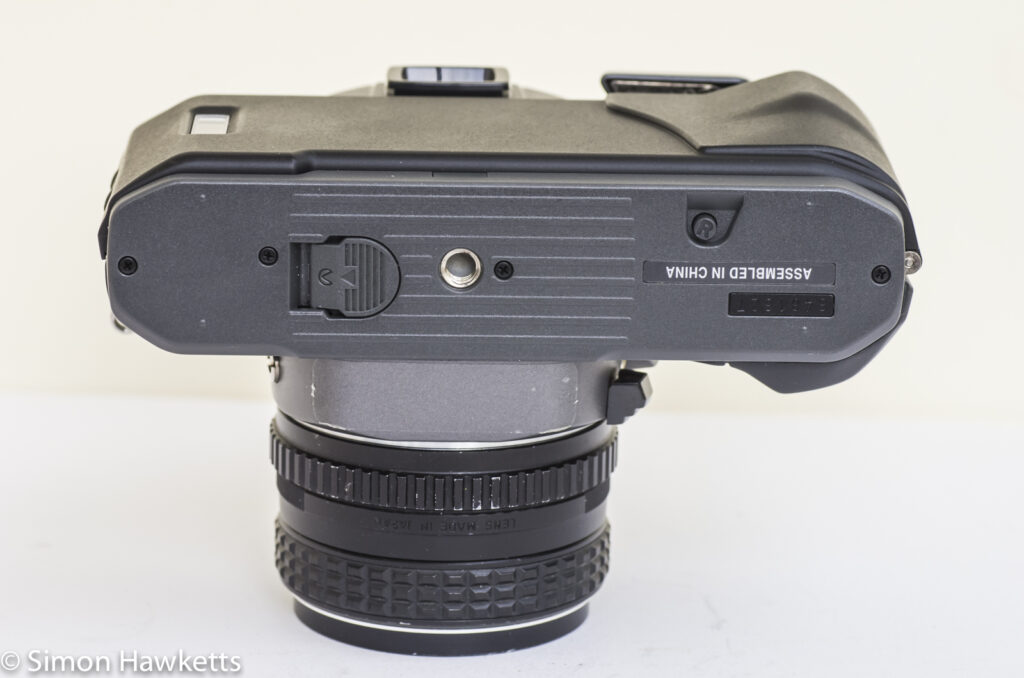

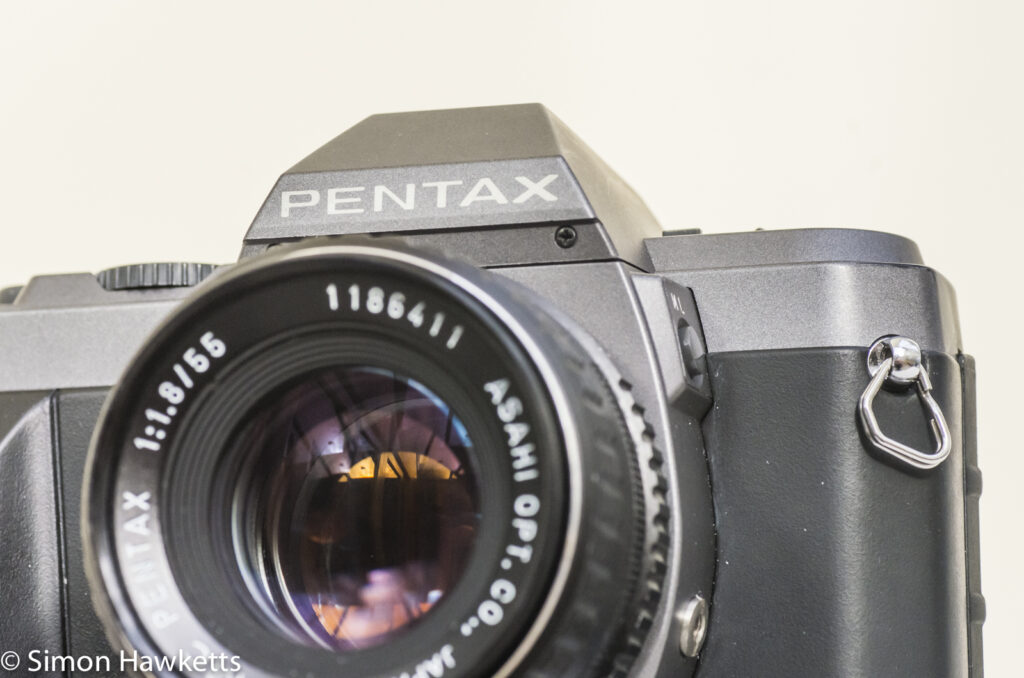
My Pentax P30T Camera
I’ve had a Pentax P30 for a while now because I inherited it from my father a few years ago. The P30 is a great camera, but I’ve always been a bit disappointed because it doesn’t offer Aperture Priority auto exposure, so I was interested to see in an article I was reading that Pentax did make a version which offered aperture priority – the P30T. Once I found that out, I decided to invest in one and found this example on eBay for £15.
When I received it, I was glad to find that it’s a fully functioning, and very clean example with hardly a mark on it. I was equally pleased to find an exposed roll of Agfachrome CTX 100 colour slide film still in the body, which I carefully rewound and removed! I love finding films in the cameras I buy because occasionally it’s still possible to get reasonable negatives (or in this case positives) from them, and I find it fascinating to look at pictures taken by unknown people of unknown places.
Originally the camera would have had a Pentax-A lens fitted to it like the Pentax 50 mm f/1.7, but I received the body only, so for the purposes of the pictures above I’ve paired the camera with a Pentax SMC 55 mm f/1.8.
I suppose the P30t could be thought of as a no frills, but very capable camera. No frills because at first glance it seems odd, for example that there is no exposure compensation, but the exposure lock system can be used instead of compensation, and in fact can be more accurate. When you look at the controls provided there seem to be very few ‘things’ to adjust, but in actual fact almost everything you need is ideally placed at hand.
I also find this model a more comfortable unit to hold that the original P30 because of the soft feel and the added grip to the back of the camera.
Update: Sample pictures with this camera are here
Pentax P30T description
The P30T was an upgraded version of the P30 and, as I said in the introduction above, was the last model in the P series that Pentax made.
The P series consisted of the P3 & 30, P5 & 50, P3n, P30n and finally the P30t. This series of camera had quite a long life, being made from about 1985 up to about 1997 with the P30t coming towards the end of that period. By the time the P30t was nearing the end of its production in 1997 Pentax were also making autofocus models in the PZ range and just starting the MZ range, which gives a clue to the longevity of the P30t.
Exposure system
This is where the main difference lies between this model and the original P30.
The exposure system has an additional option on the shutter speed dial of A or Automatic. When the shutter dial is set to A, the shutter speed is automatically selected and the camera is either in full program mode when the aperture ring is also set to A, or Aperture Priority mode when the aperture is set to an f-stop value.
When the shutter speed is moved away from ‘A’ to a set value, the camera is still in full program mode if the lens is set to A, and moves to manual mode when the aperture ring dial is also set to a value.
In manual mode the camera is effectively the same as a match needle system with the required shutter speed indicated in the viewfinder and the currently set shutter speed either above or below it. Once the shutter speed dial is set to the correct value, only one speed is shown and the exposure is set. Of course, in manual mode it’s also possible to apply exposure compensation by setting the exposure above or below the metered value.
On the side of the lens barrel is a button marked ML, which can be used to lock the exposure. This is used by pointing the camera at an area you want to correctly expose for and half pressing the shutter release to take a meter reading. Then the ML button is pressed, and the exposure system is locked to that value. You can then recompose the picture and when you press the shutter the locked exposure is applied. An obvious use for this is to apply exposure compensation, when taking pictures in a brightly back lit scene, for example.
The camera also offers a Programmed Auto Flash mode when used with a compatible Pentax flash. In this mode, the camera and flash communicate in order to make sure the correct amount of light is generated by the flash and that the camera is set to the correct aperture and shutter speed.
Lens
The camera is fitted with the Pentax K-A mount, which means it will work with any Pentax or third party lenses which have an aperture ring in all modes and can use lenses without an aperture ring in Program mode. Most of the lenses without an aperture ring will probably be autofocus lenses, but as long as they can be manually focused, they will work with this camera.
Viewfinder
The viewfinder is very similar to the P30 with one, to my mind significant, improvement. The split rangefinder has been changed to a diagonal one from the horizontal one of the original model. I always like diagonal rangefinders better because they work in either landscape or portrait orientation.
The information shown in the viewfinder is pretty good. As I said above, the full range of shutter speeds are shown down the left-hand side, but there is no indication of the lens’s aperture value. There is a letter at the top left-hand side to indicate if the camera is in Program Mode (P) or Manual Mode (M) but strangely there isn’t an A for Aperture Priority.
For someone who is used to looking through the viewfinder of an APS-C DSLR, the viewfinder looks very big and bright.
Other Features
Other nice things about this camera are the depth of field preview button which is easily pulled by the shutter finger moving to the front of the camera and the fact that it has a cable release socket which the original model was missing. I think I may have mentioned that the camera covering is more comfortable to hold?
Pentax P30T Camera Manual
I’ve recently been adding to the collection of camera manuals I have on the site, so as well as the linked online version in the spec list below, I’ve also included my own copy of the manual here.
Pentax P30t specifications
- Pentax P30t manual focus 35mm slr camera
- Manufactured between 1990 – 1997
- Aperture Priority auto, Program mode auto and Metered Manual exposure
- Auto exposure with dedicated flash
- Shutter 1sec to 1/1000 + B
- 12 sec self timer
- Pentax K-A lens mount
- Film speed auto selected with DX film 25 to 1600 ASA (no override)
- Diagonal Split Image rangefinder focusing aid
- LED shutter speed info in viewfinder
- AE mode indicator in viewfinder
- Hot shoe flash sync
- Open aperture TTL centre weighted metering
- Exposure lock button
- Powered by two modern AG13/LR44 cells
- Comfortable soft grip to body with nicely placed hand grip
- Ser No: 6481827
- Handbook available on the Camera Manuals site here
FAQ’s for the Pentax P30T
When was the Pentax P30T made?
The P30T version of the Pentax P30 Family was made in 1990.
What film does the Pentax P30T use?
The camera uses standard 35 mm film which is still readily available in Black & White and Colour.
What is the ISO Range of the P30T?
The light meter on the P30T can be set to between 25 and 1600 ISO.
Which lenses fit the Pentax P30T?
Because the P30T is fitted with the K-A bayonet mount it can take a huge variety of lenses from the both Pentax and other major camera brands.
Discover more from Everything Vintage
Subscribe to get the latest posts sent to your email.

